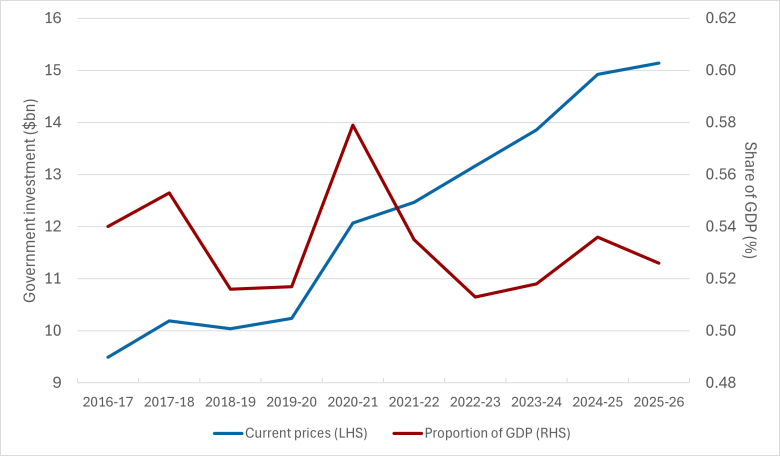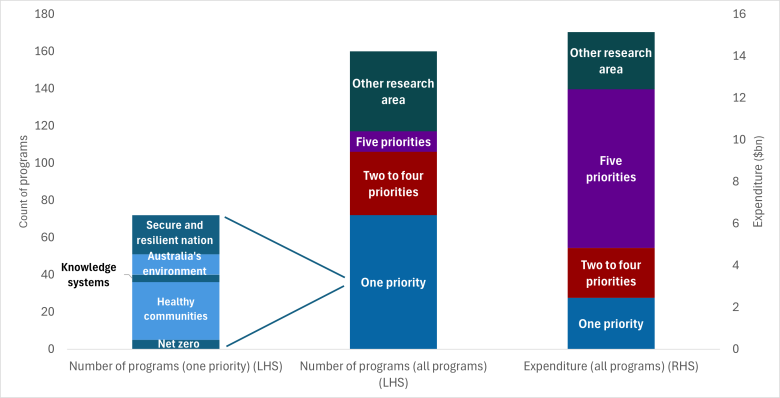Funding supports a range of programs and activities
The government’s R&D investment supports 160 programs and activities across 14 government portfolios. In 2025–26, the Industry, Science and Resources; Education; and Health and Aged Care portfolios have the highest allocated investment.
Most of the R&D investment (93%) supports the 20 largest programs. More than half of total R&D spending is directed towards the higher education (31%) and business sectors (30%). Funding in these sectors are directed to programs including the Research Training Program, Research Support Program, Australian Research Council (ARC) and R&D Tax Incentive.
In 2025–26, the government is investing a further $1.1 billion in other (non-R&D) science, research and innovation programs and activities. This includes funding for programs and activities that are explicitly intended to support science, research or innovation but do not meet the OECD’s R&D definition. For example, this figure includes $298 million of the government's funding to Geoscience Australia in 2025–26.
New data on Australia’s National Science and Research Priorities
The 2025–26 SRI Budget Tables help us to better understand how government investments in R&D relate to priorities in science and research. In August 2024, the government announced new National Science and Research Priorities:
- transitioning to a net zero future
- supporting healthy and thriving communities
- elevating Aboriginal and Torres Strait Islanders knowledge systems
- protecting and restoring Australia’s environment
- building a secure and resilient nation.
Most government R&D programs relate to at least one priority, and every priority has linked programs and funding.
The priorities are broad, 72 (45%) of the government’s R&D programs relate to just one priority, while 117 (73%) relate to more than one priority. Programs that relate to a single priority collectively account for a small part of total expenditure (16%).
There are 11 programs that relate to all 5 priorities. Programs in this category are some of the largest in the SRI Budget Tables in terms of R&D funding, and contribute 50% of total R&D spending. These include:
- R&D Tax Incentive ($4.6 billion)
- Australian Research Council (ARC) – National Competitive Grants Program ($1 billion)
- Commonwealth Scientific and Industrial Research Organisation (CSIRO) ($1 billion).
However, many of these programs pre-date the announcement of the priorities they are mapped to. Because of this they may not reflect the intended priority or outcome at the time of development. In addition, not all funding for a program necessarily relates to the priorities they are mapped to.


